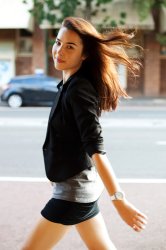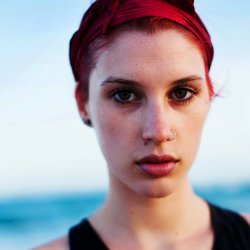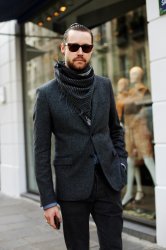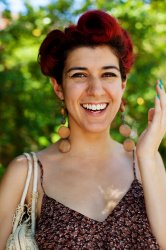[*]Aperture: f/2.8 or wider is recommended for good background isolation (blurred background or bokeh), although f/4 is entirely workable when working near the telephoto range (135mm).
[*]Sharpness: you will want razor sharp lens for portrait photography.
[/LIST]
I'm going to chime in and disagree here.
1. I shoot a lot of portraits around f/8 using muslin and seamless paper backgrounds and they come out just fine. Background separation is important, and both subject->background distance and a background light ensure this.
2. For most people, razor-sharpness produces images with bad skin blemishes and emphasizes poor hair, makeup, skin, clothing and other details. Way back when, photographers used to trap a piece of pantyhose with a filter to cover the lens and produce a soft-focus effect for portaits, purchase softening filters, or defocus control lenses, all of which had the desired effect of softening the image to make it more flattering.
Finally, lighting for portraits is key- both in how it wraps the subject's face and in how it provides catchlights in the eyes so that the viewer "connects" with the subject. Key, fill and background lights help, as does a hair light if you're not shooting high-key portraits.
On a crop-factor Canon, your kit lens near it's maximum zoom will be just fine for taking portraits. Your pop-up flash will work ok as a fill if you adjust the power downwards. You can either use window light as a key, or get 2-3 extra flashes with flash triggers for key and background if you want the best possible results. I generally have my key coming from 35-45 degrees and the fill near the camera axis with my background lights positioned depending on the shot. If I use a softbox, then it's generally the size of the subject or as close as I can get. These days though, I prefer shoot-through umbrellas for key as it gives a nice round sun-like catchlight. Remember that the closer the light source, the softer the resulting light - so keep your key as close as you can get without intruding on the image.
Light round faces from the short side (the side the subject is facing) and narrow faces from the broad side (the side away from where they're facing.) Male portraits generally use more of an angular light to emphasize the texture of the skin, while female portraits are generally lit with the key closer to the camera's position to reduce skin texture.








